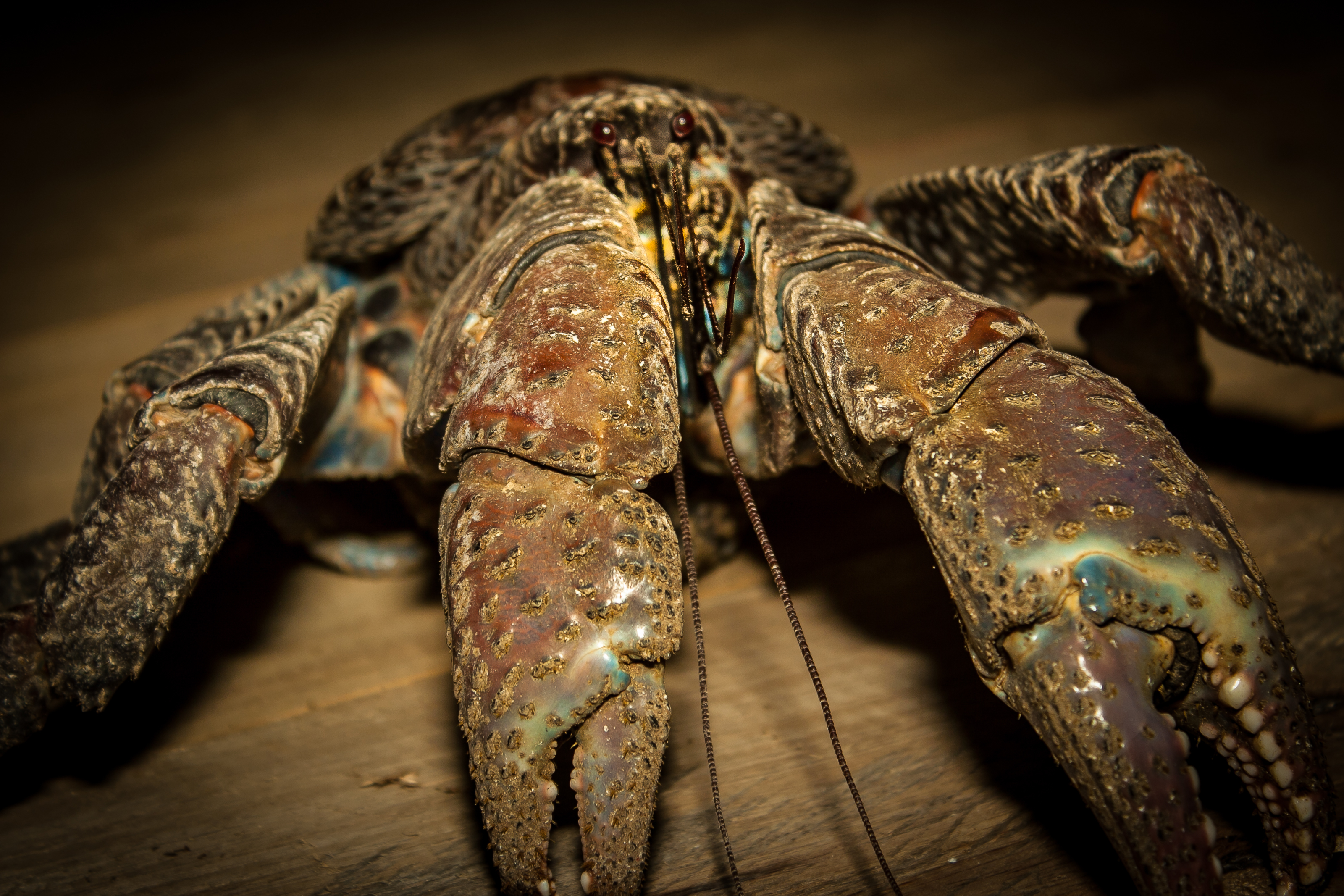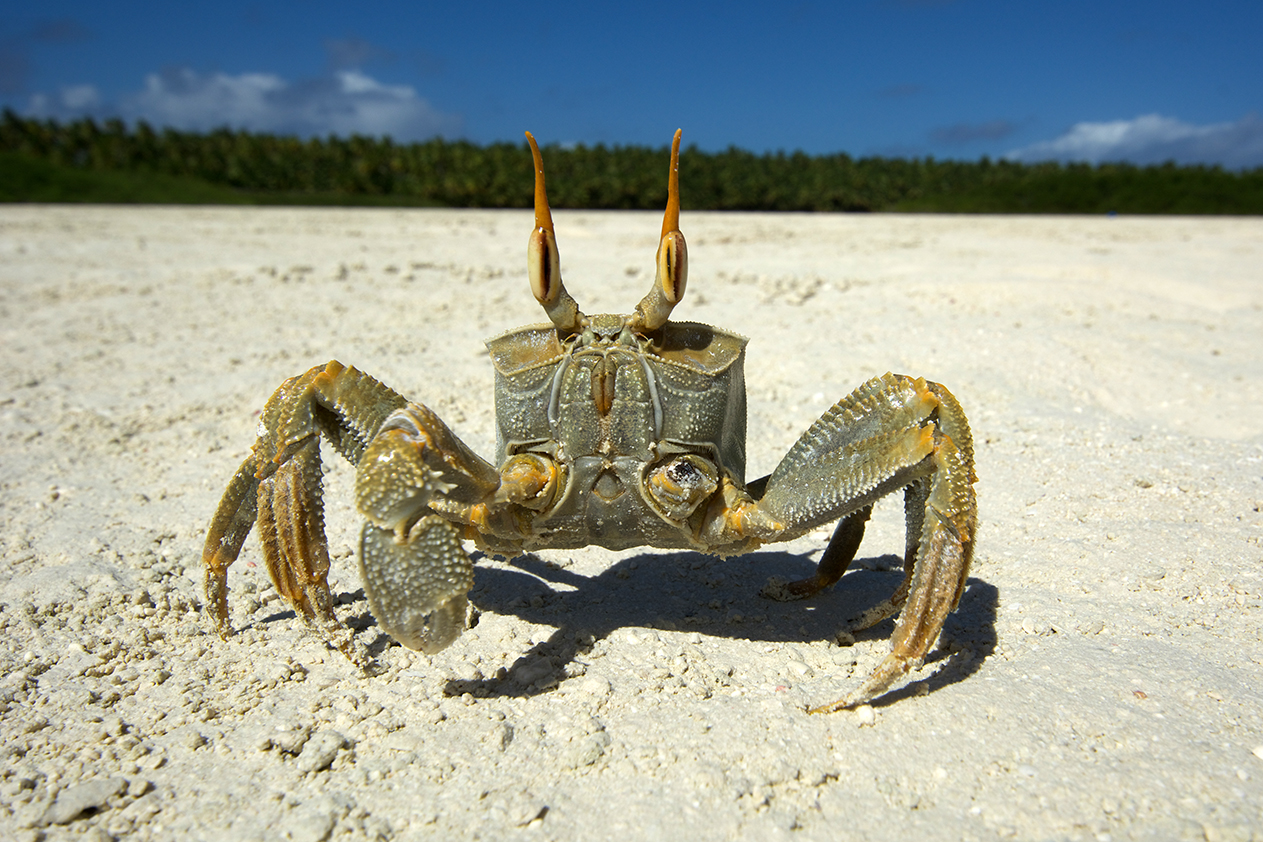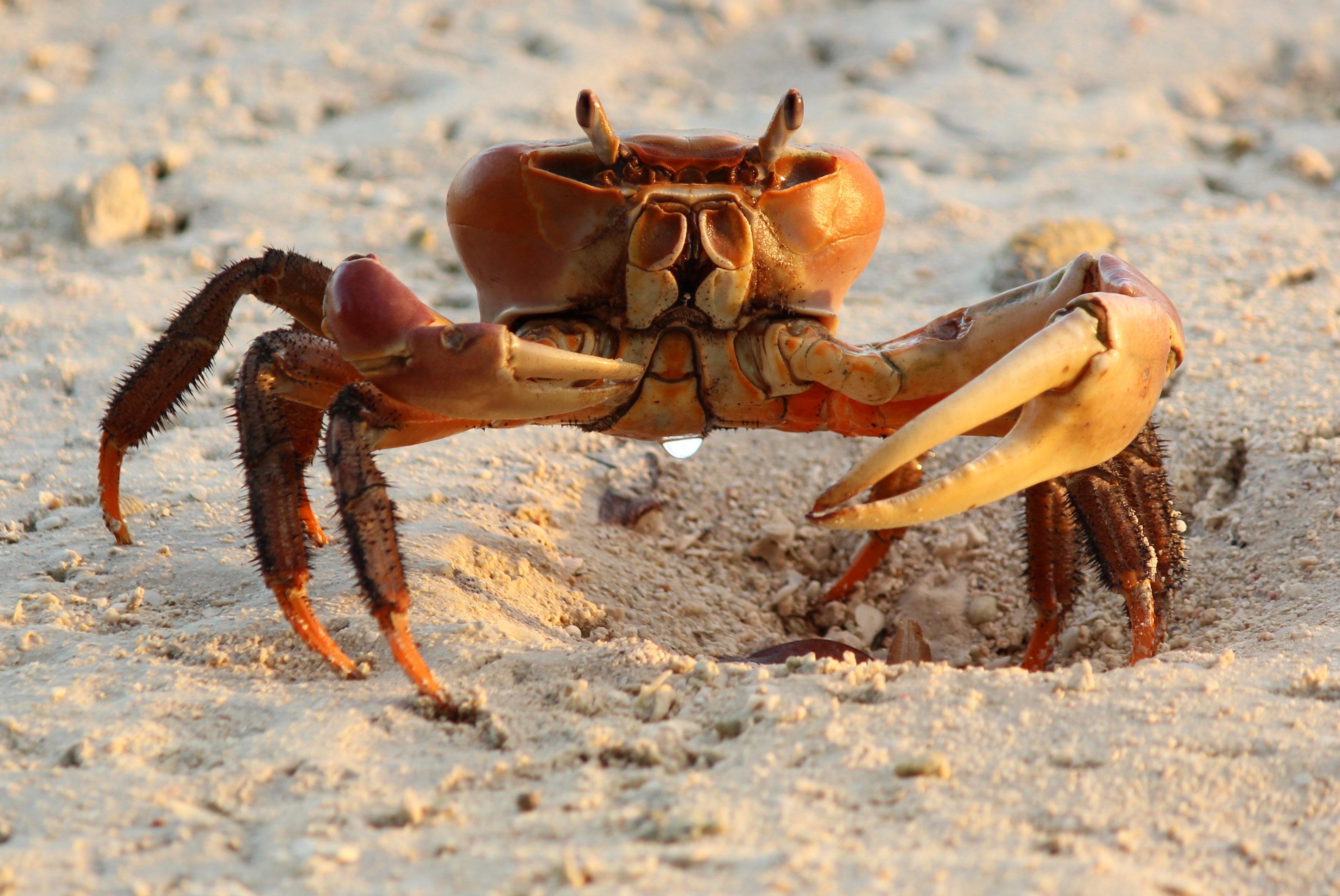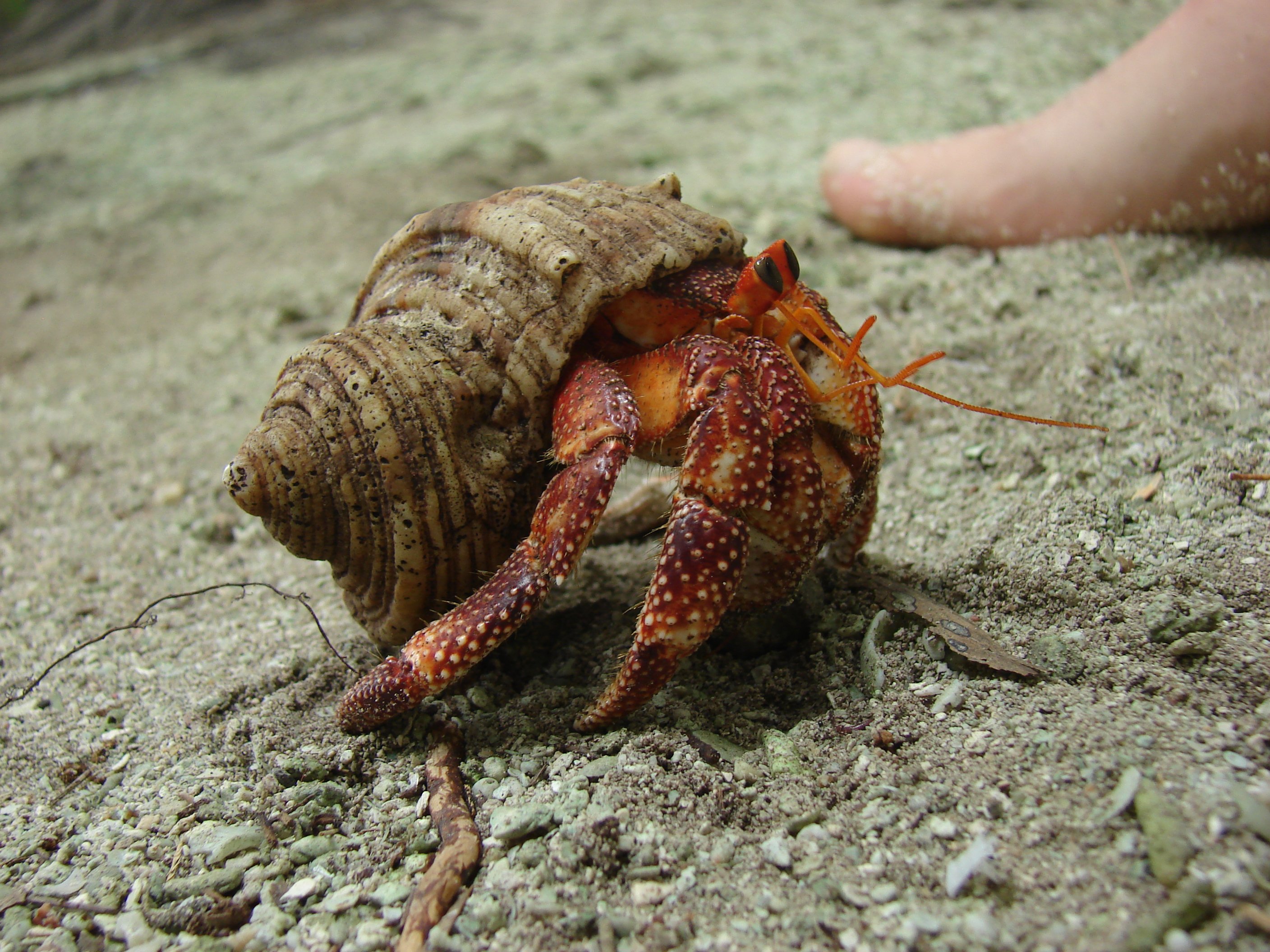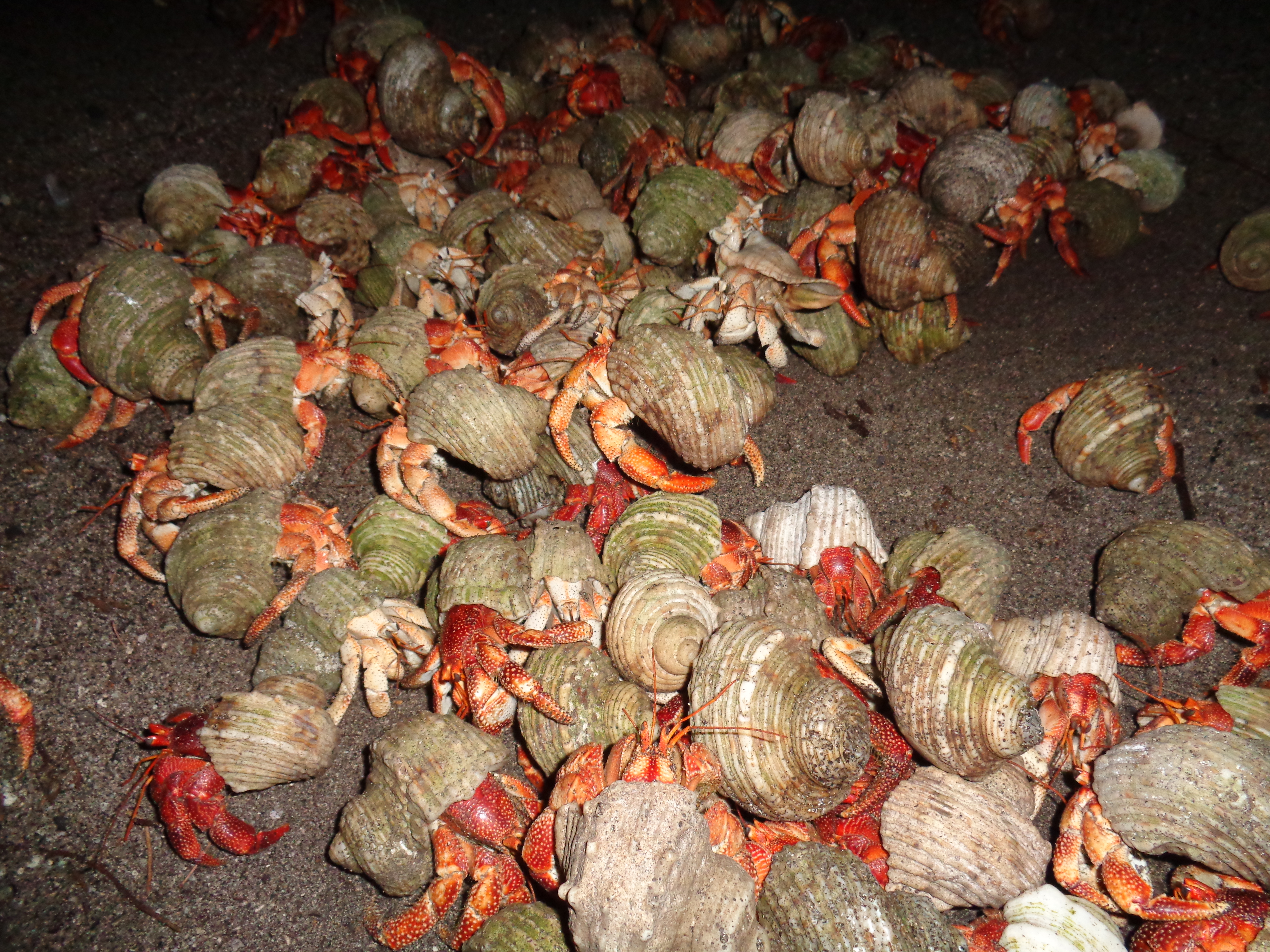The shells are alive…
Words by Kerryn Bullock
Often people are so caught up in the big things around them, like sharks, turtles and birds, that the little creatures are overlooked. One such little creature that doesn’t get enough credit is the crab. Crabs scuttle around our feet day and night on D’Arros and St Joseph, and no-one pays any serious attention to them. If I’m on my bike, I just swerve to one side to avoid riding over them in the road. But when I stop to have a look – a real look – I’m always amazed by the fine detail and extreme diversity of this family of creatures. The varied assortment of crustaceans on D’Arros and St Joseph is really something to witness.
My favourites are the hermit crabs that cover the ground at the camp on St Joseph Atoll. It’s almost impossible to walk in a straight line here – it’s more like a wobble or a stagger, as I try to avoid standing on the crabs, or a stubbed-toe hop when I pick up my foot as quickly as possible after stepping on one. Luckily the hermit crabs have strong spiral shells that they can quickly withdraw into for protection when they do get accidentally stepped on.
Hermit crabs get their own back for the misplaced step. When we’re sitting around the fire pit at the camp cooking dinner, they quietly sneak up in the darkness and nip our toes with their pincers when we least expect it. It’s not terribly sore, but we get quite a fright. They also have powerful sensory organs. They seem to just mill around camp until food is brought out to the fire. Then they home in from all directions, some from a great distance away, and move en masse towards the source of the scent. They would eat the food off the plate if they could – and they do if any plate is left unattended on the ground for even a few moments. When the plate’s owner returns, they find a pile of crabs four tiers high. Hermit crabs are omnivorous scavengers, eating anything they can get their pincers on, from plant matter to dead animals that wash up on the beach.
Hermit crabs live away from the sea, returning only to release their hatchling larvae. The growth of a crustacean is limited by its hard exoskeleton, which must be shed in a process called moulting. Once the old exoskeleton has been discarded, the crab’s body is able to expand rapidly before the new exoskeleton has time to harden. Therefore, as a hermit crab grows, it needs a continuous supply of shells of increasing size. It occupies these spiralled shells to protect its soft, elongated and twisted abdomen, which contains many of the creature’s internal organs, including the liver, digestive tract and reproductive system. The shell provides important protection for these vital organs, and the organs are longitudinal in shape to fit comfortably in the abdomen.
Next time you spot a slow-moving crab, I hope you stop for a moment to have a good look at it.

